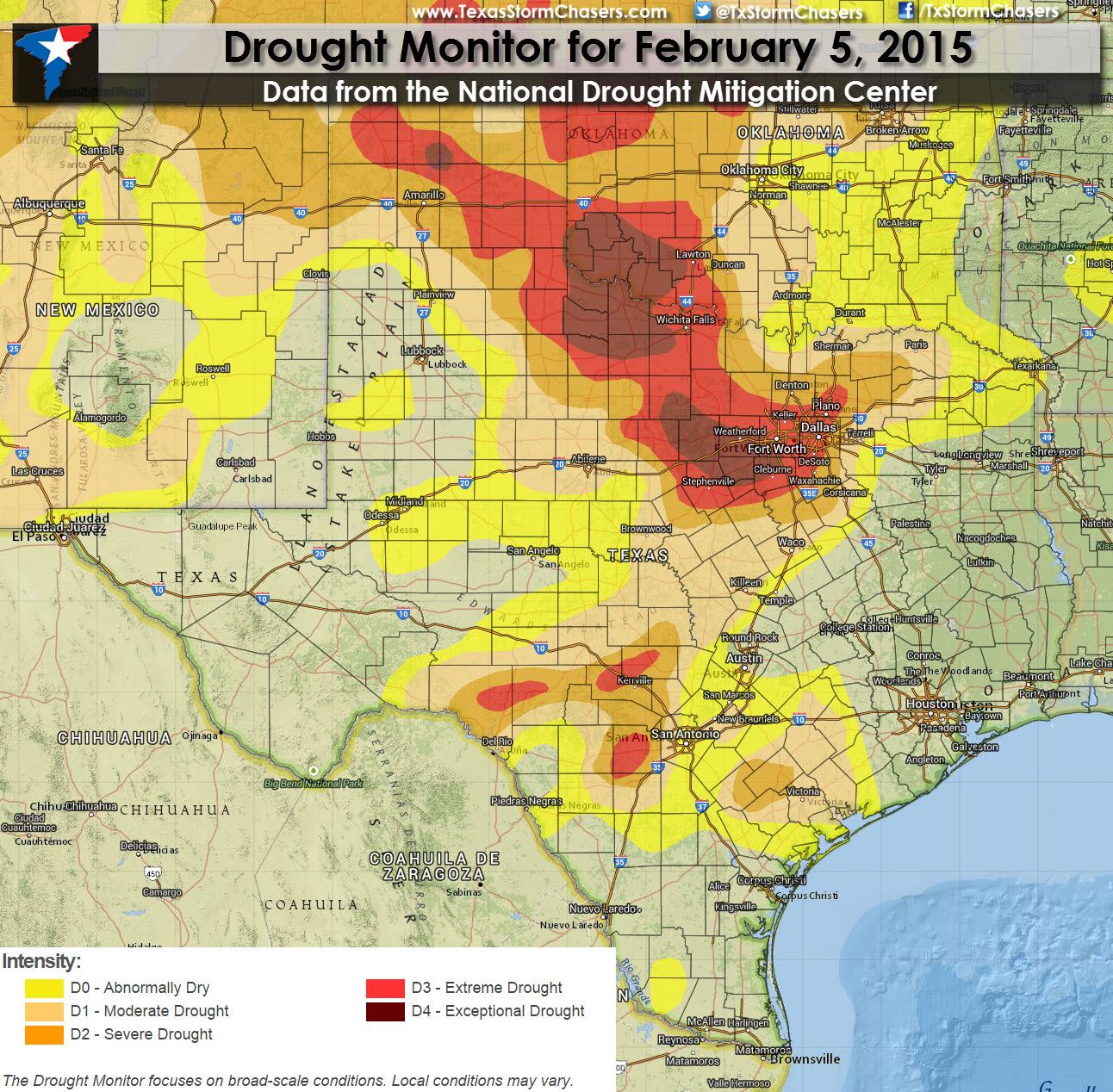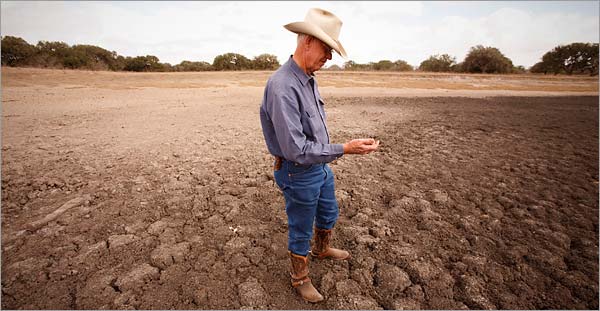According to the Lower Colorado River Authority, the Colorado River is currently facing it's driest conditions in history. 87 percent of the state is considered to be in drought.These dry conditions started to emerge in 2008 and have not gotten any better. Even with all of the rainfall in 2015, the lake reservoirs are still not near full capacity. The water shortage has forced Texas to go to other states in search for water. Texas has recently been in a dispute with Oklahoma over the water rights of the Red River which can be found in both Texas and Oklahoma territory. Even though Texas is not as dry as it used to be four years ago back in 2011, the drought is still something to be concerned about.

Many people don't notice the severity of the drought that is upon Texas. Texas has been dealing with a water scarcity for a while now. The current Texas drought is considered to be the worst one in the history of Texas. All of these problems exist because the government has failed to impose water saving policies and laws.
In Texas the surface water belongs to the state and is intended for the public's use. The other type of water is the underground water. Basically if you own a piece of land and you happen to find an aquifer or any other body of water, then it's yours to keep. I think all water in Texas should be regulated the same, regardless of it being surface or underground water.
In response to the ongoing drought, a constitutional amendment was approved in 2013. This amendment being the Texas Rainy Day Fund Amendment or also known as proposition 6. This amendment is intended to take $2 billion dollars from Texas' rainy day funds and invest it in water planning projects. This amendment was passed while Rick Perry was in office as governor.

An example of precautions that have been taken because of the low water levels, are those of Austin. Austin is currently implementing what is called stage 2 water restriction. These stage 2 water restrictions limit the hours of household irrigation, prohibit washing your car at home and prohibits restaurants from serving water to customers unless it is requested. Another interesting thing is that charity car washes are prohibited in the city of Austin. All of these restrictions can be found at the Austin Water Department website.
Sure we have gotten huge amounts of rain in recent months but that is no reason to lessen water restrictions in Texas. Livestock and agriculture is also affected by the water shortage. Texans have to be aware of the potential danger of extreme drought, such as what California is experiencing. We have to be conscious of how much water we waste year round and try to cut down, even if it is a minimal cut back.

